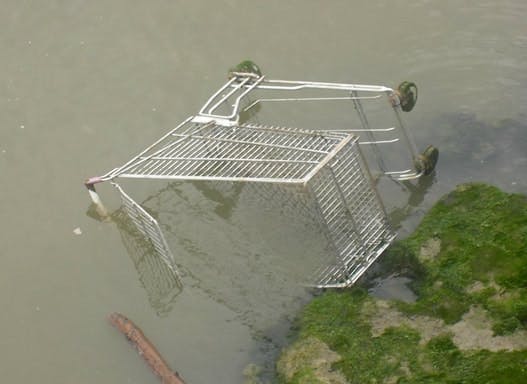
Managing Trolley Losses: Retail Best Practices
In USA, over 2 million shopping carts are lost a year. What are the best ways to track and monitor this problem? What are the root causes? What are the interventions that can make the biggest differences? What could be some of the "out of the box" future innovations to deliver a paradigm shift in the loss rate?
These were the open questions the working group sought to answer. Here is a summary of the discussion.
The Scale of the Problem
Retailers in the group reported annual trolley losses ranging from 3% to over 35%, depending on location and store type. For example, one UK retailers loses between 4,000 and 5,000 trolleys annually, costing approximately £500,000. While, a USA retailer reported losing over 50,000 carts in a year—about 11% of its fleet—translating to a potential $20 million replacement cost.
All retailers reported that a clear pareto, for example, for one retailer, 25% of the stores represented over 70% of the losses underscoring the magnitude of the issue, especially in urban and high-theft areas.
Root Causes of Trolley Loss
The causes of trolley loss are multifaceted:
- Theft for Scrap Metal: Rising steel prices have made metal trolleys attractive targets for theft, often by organized groups using unmarked vans.
- Customer Entitlement: In some regions, customers feel entitled to take trolleys home, leading to widespread abandonment in residential areas. Coin locking potentially helps increase this feeling of entitlement.
- Homelessness and Anti-Social Behaviour: Trolleys are frequently used by unhoused individuals or vandalised by youths, especially in urban centres.
- Operational Gaps: Inconsistent counting, lack of accountability, and limited surveillance contribute to unnoticed losses.
Current Interventions and Best Practices
Retailers are deploying a variety of strategies to mitigate trolley loss, focusing on prevention, accountability, and innovation.
#1. Accountability and Awareness
- Many retailers are working to shift internal mindsets, treating trolleys as valuable assets rather than disposable tools.
- Education campaigns for staff and customers emphasize the cost and impact of trolley loss.
- Some retailers have created dedicated working groups to monitor high-loss stores and improve reporting.
#2. Technology and Tracking
- Gatekeeper Systems: These use perimeter loops to lock trolley wheels when they leave designated areas. While effective, they are costly and unsuitable for shared or complex retail environments.
- Coin Locks: Still used in some regions, these encourage returns but are less effective in a cashless society.
- Digital Locks and Apps: Trials involving app-based unlocking systems have faced challenges with user adoption and cost.
- GPS and RFID: These technologies are being explored but are currently cost-prohibitive at scale.
#3. Plastic vs. Metal Trolleys
- Plastic Trolleys: Most retailers were trialling or have trialled fully plastic trolleys to reduce scrap value. Results show significant reductions in theft, but concerns remain about durability, flammability, and recyclability.
- Hybrid Models: Some retailers use a mix of plastic and metal to balance cost and resilience.
- Recycling and Sustainability: Plastic trolleys are often made from recycled materials (e.g., milk cartons), but end-of-life recycling logistics remain a challenge.
#4. Design and Deterrence
- Powder Coating: One retailer has successfully used green powder coating to make trolleys identifiable and less attractive to scrap dealers.
- Perimeter Bollards and Barriers: Physical deterrents are used in some locations to prevent trolleys from leaving premises.
- Customer Feedback: Retailers regularly gather in-store feedback to assess customer acceptance of new trolley designs and approaches to reducing losses.
#5. Collaboration and Law Enforcement
- Retailers are increasingly working with local councils and police to address trolley theft, especially in areas with high homelessness or organized crime.
- Some are advocating for stronger enforcement of existing laws against trolley removal and better coordination with scrap yards.
Moving Forward
Despite the diversity of approaches, one theme is clear: there is no silver bullet. Retailers must adopt a tailored, multi-pronged strategy based on store location, customer demographics, and operational capacity. Collaboration across the industry, investment in innovation, and a cultural shift toward valuing trolleys as critical assets are essential steps forward.
Retailers interested in addressing trolley loss should begin by auditing their current fleet, identifying high-risk locations, and piloting a mix of interventions. Sharing data and best practices across the sector will be key to developing scalable, cost-effective solutions.
If you would like to join our working group on trolleys and other loss prevention topics, please click here and sign into our online meetings.
Jun 13, 2025
Main office
ECR Community a.s.b.l
Upcoming Meetings
Join Our Mailing List
Subscribe© 2023 ECR Retails Loss. All Rights Reserved|Privacy Policy
